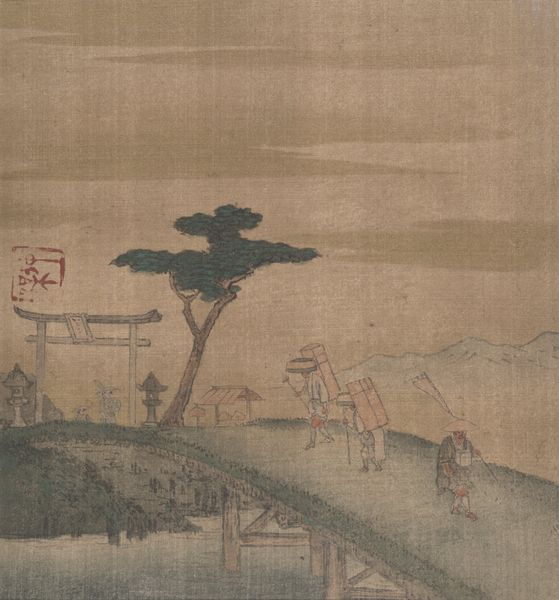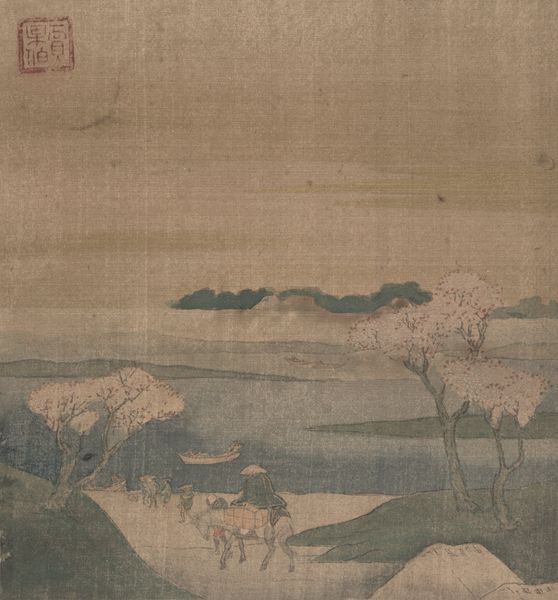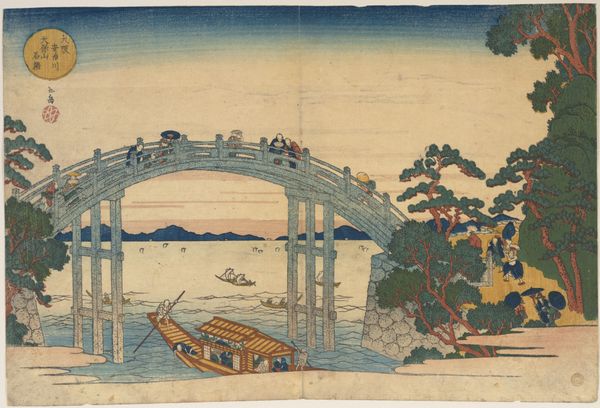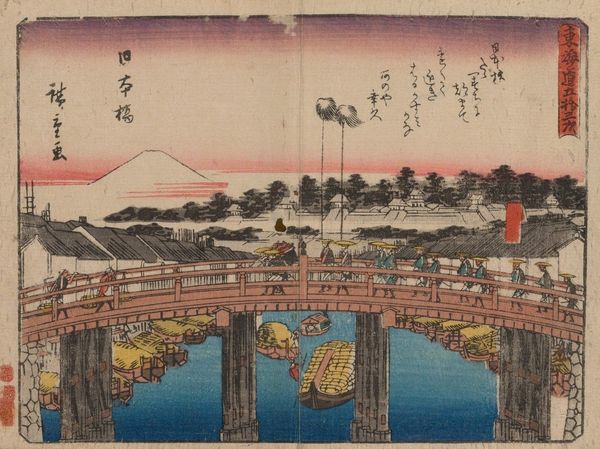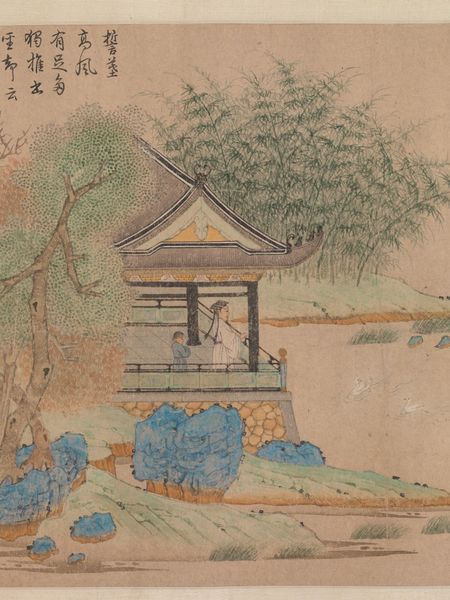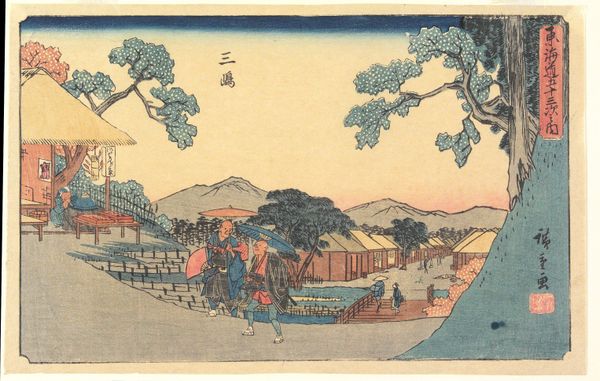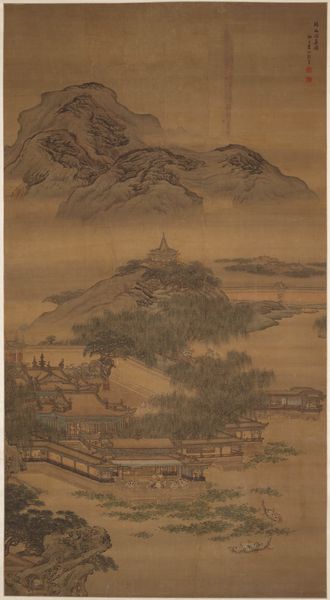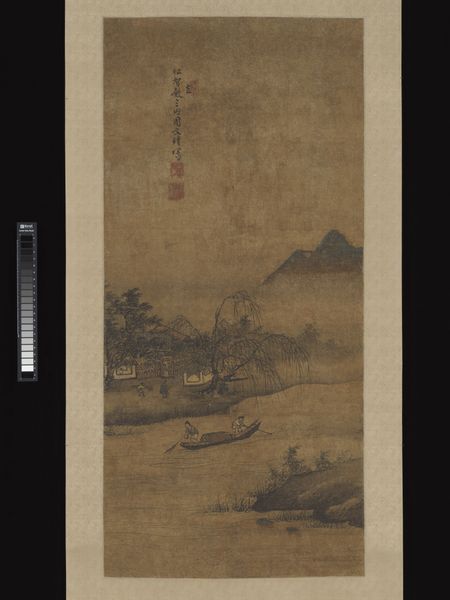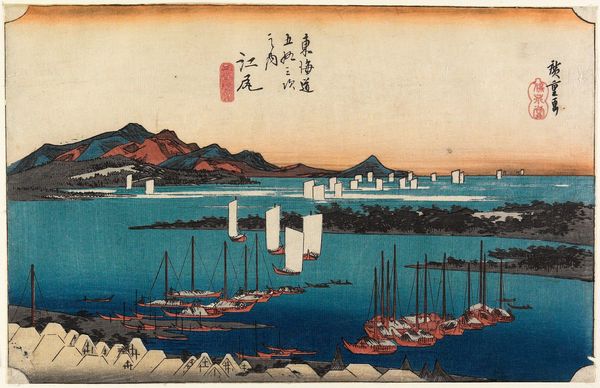
painting, print, ink
#
painting
# print
#
asian-art
#
landscape
#
ukiyo-e
#
japan
#
ink
#
cityscape
Dimensions: 6 7/8 × 6 3/8 in. (17.46 × 16.19 cm) (image)7 11/16 × 7 1/16 in. (19.53 × 17.94 cm) (mount)
Copyright: Public Domain
Curator: Here we have "Scenes from the Tokaido," a 19th-century print attributed to possibly Hokei, found here at the Minneapolis Institute of Art. It exemplifies ukiyo-e with an ink and color composition that presents a moment in the urban landscape. Editor: My first impression is one of ethereal lightness. The composition appears muted, and perhaps a bit melancholic—is it meant to convey a sense of transience so common in Ukiyo-e art? Curator: I believe the aesthetic arrangement intentionally minimizes tonal variety. Notice the flattening effect of the pale sky and water, pushing the emphasis toward form and pattern within the figuration. The bridge with its procession becomes an important visual device. Editor: The very making of Ukiyo-e relies on labor—the artist, the woodblock carvers, and the printers—each contributing to the final image, making it a truly collaborative process. How much of the initial design is Hokei's, do you think? Curator: Determining exact attribution can be difficult with collaborative works like these. Still, considering elements such as line quality, spatial organization, and the proportional relationships between the figures, a practiced eye might identify his compositional trademarks. The arrangement of the bridge and how it intersects with other areas implies an organizational concept of significance. Editor: Look at how they carry those bundles of goods and supplies. It speaks to the vital exchange of resources in that area—what they're trading, who they are meeting, and where all those individual strands connect within that social network! Curator: Interesting point. Beyond just representing activity, it evokes, through form and organization, the broader, perhaps less tangible concept of transience that the piece seeks to understand as its principal aesthetic function. Editor: I appreciate the piece from that angle. Seeing these individuals and pondering how art represents everyday life enriches our view of the society from which the image originated. Curator: Likewise, focusing on the visual architecture deepens our grasp of the artwork's thematic content and helps reveal Hokei's approach to his craft, if we may indeed call him the author.
Comments
No comments
Be the first to comment and join the conversation on the ultimate creative platform.
